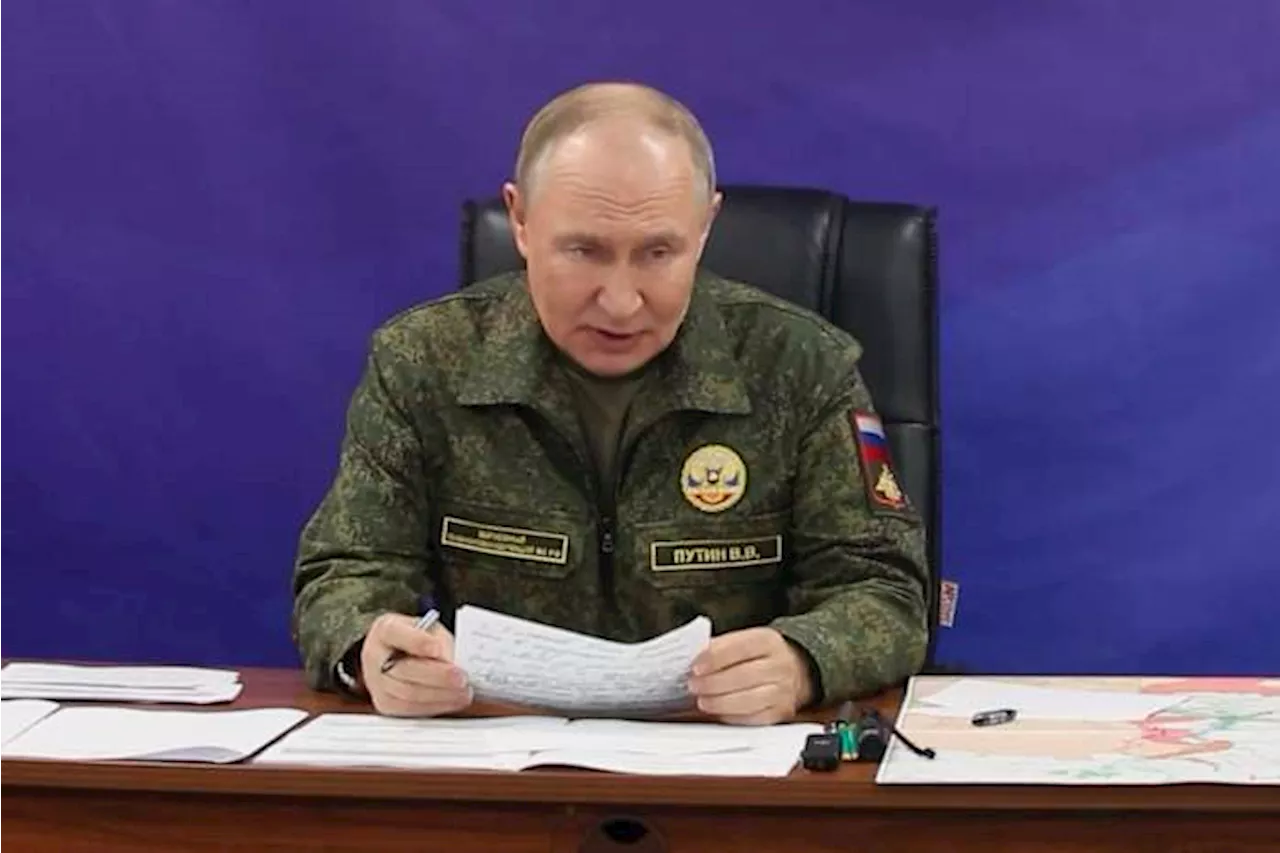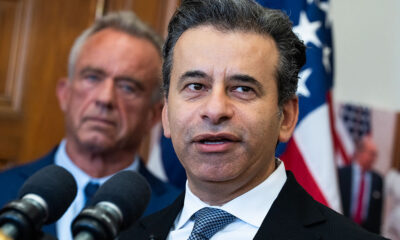Politics
Putin Unveils Successful Test of Nuclear-Powered Cruise Missile

Russian President Vladimir Putin announced the successful testing of the Burevestnik, a new nuclear-powered cruise missile, during a recent visit to a military command post. This development follows years of extensive testing and comes at a time of increasing tensions with Western nations. The missile is engineered to possess an unlimited range and to evade current missile defense systems.
On October 26, 2025, the Russian Presidential Press Office released video footage of Putin’s visit to the command post of the Joint Group of Forces. In the footage, Putin, dressed in camouflage fatigues, was briefed by General Valery Gerasimov, the Chief of General Staff. Gerasimov reported that the Burevestnik had successfully traveled 14,000 kilometers (approximately 8,700 miles) during a critical test, remaining airborne for 15 hours. He remarked that this performance was “not the limit,” suggesting potential for even greater capabilities.
The Burevestnik, also known as the “storm petrel” in Russian, has been a topic of scrutiny among Western military experts, particularly concerning the reliability of its nuclear propulsion system. Putin had first revealed Russia’s advancements on this missile during his 2018 state-of-the-nation address, asserting its ability to evade existing missile defenses due to its purported unlimited range.
This announcement occurs within a broader context of Russia’s nuclear strategy, particularly amid strained relations with the West concerning the ongoing conflict in Ukraine. The Kremlin has shown resistance to Western calls for a ceasefire and has issued stern warnings to the United States and NATO allies against using longer-range weapons that could strike deep inside Russian territory.
In conjunction with the missile’s announcement, Putin emphasized that preparations should commence for its deployment within the Russian armed forces. He claimed the Burevestnik is impervious to both current and future missile defenses, attributing this to its nearly limitless range and unpredictable flight path.
The recent developments come on the heels of a military exercise that tested various components of Russia’s nuclear triad, which includes intercontinental ballistic missiles, submarine launches, and strategic bomber drills. The Kremlin has been actively conducting drills to assess military command structures, underscoring a sustained focus on nuclear capabilities amidst rising international tensions.
Despite the strategic advantages that the Burevestnik could present, concerns persist regarding the environmental impact of nuclear-powered missiles and the complexities involved in their management. Historically, both the United States and the Soviet Union explored nuclear-powered missile technology during the Cold War but ultimately abandoned such projects due to safety apprehensions.
As Russia continues to develop its military capabilities, the implications of the Burevestnik’s successful testing will likely resonate within international security discussions, raising questions about the future of arms control and military strategy in a tense global landscape.
-

 Science1 week ago
Science1 week agoResearchers Challenge 200-Year-Old Physics Principle with Atomic Engines
-

 Politics1 week ago
Politics1 week agoNHP Foundation Secures Land for 158 Affordable Apartments in Denver
-

 Health1 week ago
Health1 week agoNeuroscientist Advocates for Flag Football Until Age 14
-

 Lifestyle1 week ago
Lifestyle1 week agoLongtime Friends Face Heartbreak After Loss and Isolation
-

 World1 week ago
World1 week agoGlobal Military Spending: Air Forces Ranked by Budget and Capability
-

 Health1 week ago
Health1 week agoFDA Launches Fast-Track Review for Nine Innovative Therapies
-

 Top Stories2 days ago
Top Stories2 days agoUrgent Search for Suspect Who Exposed Himself to Teen Girl
-

 Business1 week ago
Business1 week agoMaine Housing Inventory Surges to Post-Pandemic High
-

 Top Stories2 weeks ago
Top Stories2 weeks agoUnforgettable Moments: The Best Victoria’s Secret Performances
-

 Business1 week ago
Business1 week agoSpirit Airlines Cuts Workforce with Furloughs for 365 Pilots
-

 Politics1 week ago
Politics1 week agoIsraeli Air Strikes in Lebanon Kill One, Wound Seven Amid Tensions
-

 World1 week ago
World1 week agoTroops to Enjoy Buffalo Chicken, Thai Curry in 2026 MREs









